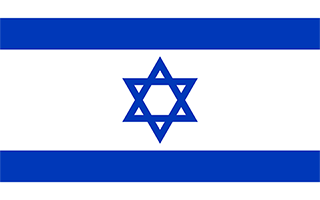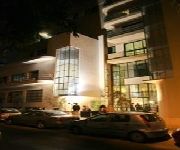Facts and Data
Webpages:
Official Unesco Page
View photos from OUR PLACE the World Heritage collection
www.white-city.co.il
Basis Data:
Unesco World heritage since: 2003
Size of heritage: 140 ha
- Buffer zone: 197 ha
Coordinates:
Longitude: 34,783°
Latitude: 32,067°
Summary
Tel Aviv was founded in 1909 and developed as a metropolitan city under the British Mandate in Palestine. The White City was constructed from the early 1930s until the 1950s, based on the urban plan by Sir Patrick Geddes, reflecting modern organic planning principles. The buildings were designed by architects who were trained in Europe where they practised their profession before immigrating. They created an outstanding architectural ensemble of the Modern Movement in a new cultural context.
Location on Map
Show bigger map on Openstreetmap
White City of Tel-Aviv -- the Modern Movement
The White City of Tel-Aviv, located in Israel at coordinates N32 4 0 E34 46 60, is a UNESCO World Heritage site that showcases the Modern Movement architectural style. This unique urban area is renowned for its collection of over 4,000 buildings, predominantly constructed in the 1930s by German Jewish architects who immigrated to the region during the rise of the Nazi regime.
History
The history of the White City dates back to the early 20th century when Tel-Aviv, a young city founded in 1909, experienced rapid growth due to an influx of Jewish immigrants. As these immigrants arrived, they brought with them a desire to create a new architectural identity that reflected their modernist ideals.
During the 1930s, a group of German Jewish architects, influenced by the Bauhaus movement and other modernist trends, began designing and constructing buildings in Tel-Aviv. These architects, including Arieh Sharon, Dov Karmi, and Richard Kauffmann, aimed to combine functionality, simplicity, and aesthetics in their designs.
However, the rise of the Nazi regime in Germany forced many of these architects to flee their home country. They found refuge in Tel-Aviv, where they continued to develop their architectural vision, leaving an indelible mark on the city's landscape.
Current State
The White City of Tel-Aviv has undergone significant preservation efforts to maintain its architectural integrity and historical significance. In 2003, it was inscribed as a UNESCO World Heritage site, recognizing its outstanding universal value as a testament to the Modern Movement.
Today, the White City remains a vibrant and thriving neighborhood within Tel-Aviv. Its buildings, characterized by their clean lines, flat roofs, and white facades, continue to serve as residential, commercial, and cultural spaces.
While some buildings have been renovated and adapted to modern needs, the overall architectural style and character of the White City have been carefully preserved. The area's unique urban fabric, with its wide boulevards and green spaces, provides a pleasant environment for residents and visitors alike.
Furthermore, the White City has become a hub for cultural activities and events. The Tel-Aviv Museum of Art, located in the heart of the neighborhood, showcases a diverse collection of modern and contemporary art. Additionally, the annual White Night event, held in the summer, celebrates the city's architectural heritage with guided tours, exhibitions, and performances.
The White City of Tel-Aviv stands as a testament to the resilience and creativity of the architects who shaped it. Its recognition as a UNESCO World Heritage site ensures that future generations can appreciate and learn from the Modern Movement's architectural legacy in this vibrant city.
Hotels and places to stay
The Rothschild 71 Hotel
THE DIAGHILEV HOTEL
65 Hotel - an Atlas Boutique Hotel
NYX Tel Aviv
The Rothschild Hotel Tel Aviv's Finest
See The Sea - Designed Rooms
Hotel B Berdichevsky
Laguardia Hotel
THE NORMAN TEL AVIV
The Norman Tel Aviv
Videos from the area
Videos provided by Youtube are under the copyright of their owners.

















